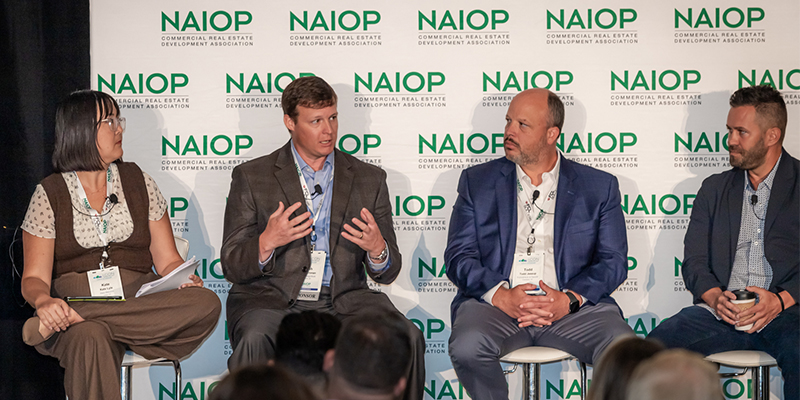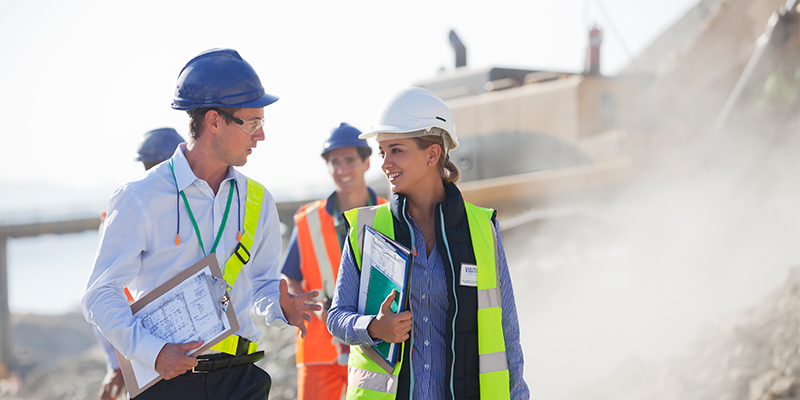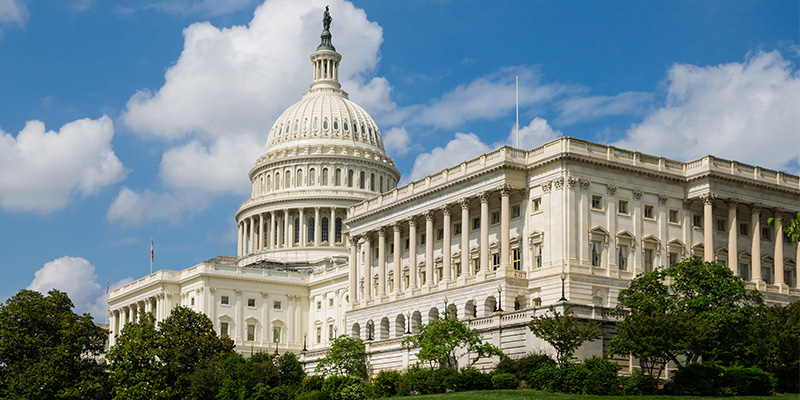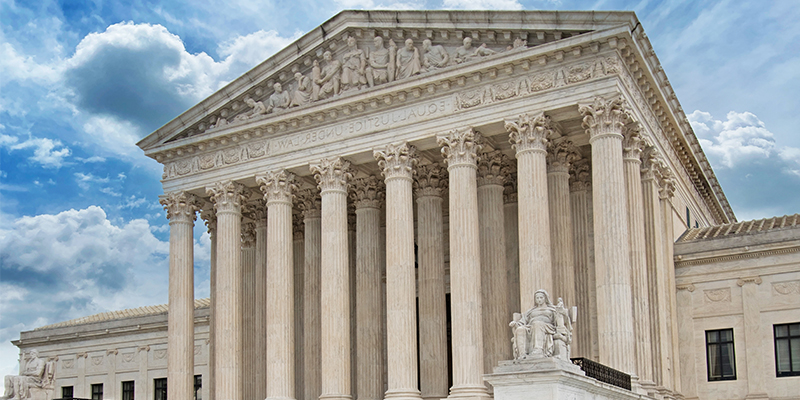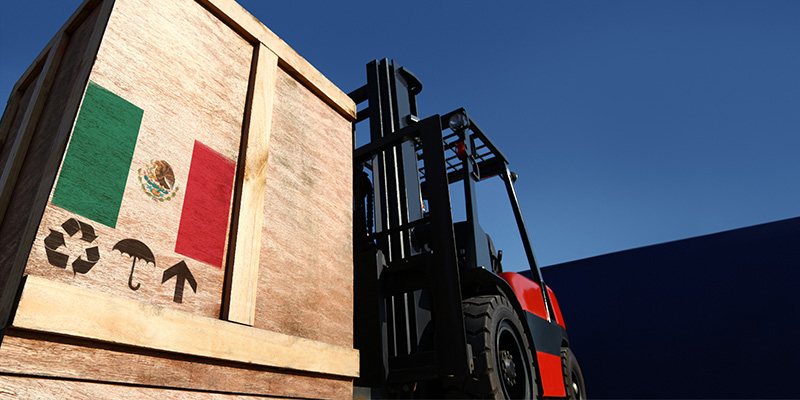NAIOP’s industrial conferences are known for exceptional information from leading experts in
addition to invaluable networking. Find key takeaways from I.CON Cold Storage 2023, NAIOP’s
first cold storage conference, below.
- Current cold storage inventory is 37 years old on average and lacks the energy efficiency, technology or physical design for bigger trucks and more loading that companies like Walmart or Amazon require.“We have an entire product line that needs to be replaced,” said economist KC Conway in a keynote address. Ports can’t offer capital for development, but they can offer credit enhancements that guarantee rent for up to two years after a project is completed. Lenders like this and they may be more willing to get involved in a project with a few years of guaranteed leasing. “Cold storage needs to be understood. It’s a business enterprise with tangible assets, and real estate is only one piece of it,” Conway said.
Read more: Peeling Back the Onion of Capital Markets and Cold Storage Development. - There is great opportunity in the cold storage space; however, it is far more complex than other industrial buildings, making speculative development especially challenging. “Cold storage is unlike other asset classes because it marries operations and development,” said Anthony Rinaldi, founder and managing principal, Saxum Real Estate. “You need members of the team with experience in drilling down to the nitty-gritty of the end user, understanding how to fill the pallet positions, and where demand will be moving forward. Gray lines are blended more in cold storage than any other product type.”
Read more: Getting into Cold Storage: Investors, Developers and Operators Share Strategies for Success. - Speed to market is critical in order to be competitive in the cold storage sector. “In order to play in the [public refrigerated warehouses] industry, you have to have a national network if you want to be relevant with a lot of the major food manufacturers and retailers,” said JD Schwefler, head of site selection and design solutions, Arcadia Cold Storage. The goal is to get across the country in one day. “Fewer people have to touch that box if you’re closer to the customer, and you also need to add less refrigerant, which reduces your cost,” explained Juan Camilo Meisel, founder and CEO, Grip. Read more: The Who, Where and Why of Cold Storage End Users.
- Populations are shifting away from the West Coast and toward the Great Lakes, Gulf Coast region and Southeast – all major areas that are gaining population but don’t have necessary cold storage facilities in place. Economist KC Conway called the area from the Great Lakes down to Texas and across the Mid-Atlantic to the Southeast the “Golden Triangle” and noted that over half of the nation’s gross domestic product and 80% of our food supply through food processing and manufacturing comes from this region. Rail infrastructure is going to be critical to move goods from port cities and agricultural areas to these more inland markets, as well as inland ports and waterways that will facilitate goods movement.
Read more: Peeling Back the Onion of Capital Markets and Cold Storage Development. - Weighing second-generation space versus build-to-suit frequently depends on pricing and timeline for delivery. Spec availability is slim, and a build-to-suit can be even harder to secure. Older assets that can be retrofitted and modernized are appealing and can typically be brought online faster than new buildings. Users need space tomorrow, and often second-generation spaces are the only option given a desired timeline.
Read more: Inside Industrial Cold Storage Leasing. - The industrial cold storage industry continues to expand utilization of prefabricated refrigeration systems to address cost, schedule, quality and safety. “The overall simplification of the design and construction process allows us to accelerate front-end planning as well as the execution piece in the field,” said Matthew Hirsch, president, Primus Builders, Inc. “You can imagine that ordering refrigeration equipment and starting to prefabricate while the foundations are going in the ground is a huge head start instead of having to wait for the critical pieces to be done before the refrigeration team can mobilize.”
Read more: The Pros and Cons of Packaged Industrial Refrigeration Equipment. - Each cold storage facility is going to look different, making it imperative to sit down with the end user to determine their needs early in the process. “If a project is an extension of a production facility, there may be need for blast freezing or packing,” said Todd Jessup, president of Flexspace and co-founder of FlexCold. “What’s on the pallets and if it’s being handled by full pallet or by piece makes a difference in the number of workers needed in a facility, and projects at ports will require space for imports and exports, plus staging and inspecting for regulatory requirements,” he said.
Read more: No One-size-fits-all Solution for Cold Storage Design and Construction. - For dry warehouse, around 5% of a user’s operating expenses will go toward rent; for cold storage, it can be more than 30%. With demand increasing, speakers agreed that opportunities are immense, but a tipping point may be ahead. Modernizing existing stock is one such opportunity, but costs for construction and capital must be absorbed and users are seeing an uptick in rent as a result. These types of decisions are forcing companies to realign their supply chains and reimagine how they do business, examining every piece of how goods move toward the consumer.
Read more: Getting into Cold Storage: Investors, Developers and Operators Share Strategies for Success. - When it comes to structural design, cold storage facilities keep getting taller. “The standard now is a 55’ maximum deck, and the limiting factors are equipment and fire protection,” said Josh Cronan, vice president, ARCO Design/Build. “The minute those systems are approved for 60-65’, it’s all anyone will want,” he said.
Read more: No One-size-fits-all Solution for Cold Storage Design and Construction. - What’s in the future for cold storage? Sustainability, transparency and convenience. “I think the American consumer is changing,” said Blair O’Connor, senior director of real estate, Wonder Group, Inc. “There’s a whole generation now that wants to know, was it ethically sourced? Where did it come from?” “Sustainability is obviously a big focus in terms of the end consumers,” agreed William Casey, general manager, Pinnacle Real Estate-Gordon Food Service Real Estate. “They’re the ones in a lot of ways that are driving retailers, food service companies, to be able to say that they’re sustainable in their supply chains and what they’re producing and providing.”
Read more: The Who, Where and Why of Cold Storage End Users.
The top 10 takeaways from I.CON Cold Storage 2023 are available for download as a PDF here.
The next I.CON Cold Storage is being planned for fall 2024. Click here to join our email list for updates!

